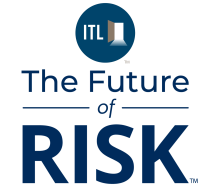Navigating the complex considerations affecting organizations and their third parties presents challenges for insurance professionals advising businesses on compliance matters. As external experts, insurance professionals can often provide key guidance on verification requirements that protect organizations, but this takes time. What begins as a simple call or email can often cascade into a series of lengthy exchanges — turning a straightforward inquiry into a time-consuming back-and-forth.
AI solutions are emerging as supportive resources that strengthen insurance knowledge, expertise and efficiency. What makes AI a game-changer isn't automation alone, nor is it replacing human expertise — it's how it equips those with insurance expertise, and those without, with intelligent insights to better understand what items are needed to achieve insurance compliance.
According to a recent survey, 90% of small business owners are unsure about the adequacy of their coverage. AI serves as an intelligent assistant, quickly surfacing important information and providing context when needed. This allows both insurance experts and non-insurance professionals alike to understand what's needed and why it matters, fostering alignment and transparency.
The impact includes faster verification, fewer coverage and requirement gaps left unaddressed, and faster time to compliance. As Gartner predicts a doubling in risk and compliance technology spending by 2027, companies recognize that AI solutions that enhance collaboration deliver the greatest returns.
In insurance compliance, AI provides benefits in three ways: quickly identifying emerging risks, providing deeper insights and analysis, and enabling informed decisions — all while reducing manual effort and enhancing accuracy.
AI provides intelligent risk insights
Insurance verification has long operated as a black-and-white checkbox: compliant or non-compliant. This binary approach frequently disrupts insurance professionals, who must answer repeated basic questions from clients and their third parties, taking time away from key advisory work.
AI can enhance the process by offering intelligent, real-time insights within existing workflows. The technology automatically screens uploaded certificates, instantly identifying non-compliant documentation and generating precise, tailored communications to insurance professionals in their preferred language and professional context.
By acting as both an intelligent flagging system and a nuanced translator, AI eliminates the time-consuming back-and-forth that typically delays compliance processes. Insurance professionals can now focus on strategic risk assessment, while the AI handles routine verification, communication, and alignment across different stakeholders.
For instance, the system can identify specific documentation needs. Instead of a simple status notification, an AI-powered platform can share what's needed in clear language, why it matters, and how to obtain it.
This clarity fosters an environment where insurance knowledge is seamlessly integrated into the process, creating alignment across all parties involved. With everyone operating from the same information, AI tools can streamline communication and reduce confusion.
The result is a more collaborative, transparent, and simplified process in which AI can handle routine inquiries. This allows professionals to trust that compliance is properly managed without the administrative headaches.
Meanwhile, third parties and their agents benefit from improved transparency, easy communications and automated notifications that demonstrate their compliance status, establish them as reliable vendors, and facilitate timely payments — all of which strengthen their business relationships.
AI centralizes compliance and enhances visibility
Compliance verification often involves multiple parties with different priorities and levels of insurance knowledge, which can create communication challenges and process inefficiencies.
For insurance professionals, AI transforms client advisory services through three key capabilities: providing real-time visibility into compliance status, identifying and clearly communicating specific documentation needs, and enabling automated, precise notifications to address emerging compliance gaps.
The transparency provided by these systems allows third parties to see precisely where they stand on compliance at any moment, enabling them and their insurance agents to take steps toward resolution. Organizations gain comprehensive visibility into compliance trends across their network, identifying patterns and opportunities for process improvement that might otherwise remain hidden in dispersed data.
AI's ability to analyze large volumes of compliance data also provides risk insights tailored to the appropriate industry context, flagging potential gaps in compliance that can be addressed by humans before they escalate into business disruptions. While AI can't yet fully interpret complex or conflicting information, these automated alerts help identify areas needing expert attention.
AI systems can provide instant responses to routine questions, highlight complex insurance industry terminology, and offer contextual guidance as end users navigate through the system, thereby enabling insurance professionals to dedicate their expertise to more nuanced and strategic case analyses. This creates efficiency while equipping end users with insurance knowledge, ensuring specialized expertise is applied where it adds the most value and creating a more streamlined experience for everyone involved. Requirements remain firmly in place, but the path to meeting them becomes clearer and more transparent.
AI delivers business impact
For insurance professionals, the business case for AI extends beyond helping clients achieve processing efficiency — it can enhance their own service delivery and advisory capabilities. AI creates value through three strategic dimensions: efficiency gains, speed to compliance, and relationship enhancement.
Time savings represent one of the most immediate benefits, as AI automates routine verification tasks and provides instant feedback. This acceleration removes bottlenecks that delay project starts, contract finalizations, and service initiations.
Coverage verification quality also improves. AI doesn't get distracted, tired, or rushed during busy renewal periods. Organizations typically see significant improvements in compliance rates when implementing AI-powered solutions. It's always helpful, ready, and insightful. It also flags renewals well in advance, giving everyone ample time to meet deadlines — eliminating those last-minute rush requests that disrupt workflows. This improvement represents real risk reduction through faster time to compliance and potential cost avoidance from unexpected claims that could arise from non-compliance.
Perhaps most valuable for insurance professionals is how AI can transform their client communications by automating timely, precise notifications across all parties. These systems ensure instantaneous, compliant updates that eliminate missed deadlines, reduce administrative stress, and keep insurance agents, businesses, and third parties seamlessly aligned — transforming potential communication chaos into a streamlined, proactive workflow.
Companies that adopt AI compliance tools can gain competitive advantages through faster onboarding, stronger protection, and more collaborative relationships. These advantages translate directly to bottom-line results through reduced administrative costs, lower risk exposure, and improved operational efficiency.
The future of insurance compliance
AI is transforming how risk insights are distributed and leveraged across the insurance compliance ecosystem. By providing relevant information exactly when it's needed, AI helps organizations, their third parties, and insurance professionals work together more effectively.
As these technologies continue to evolve, increasingly sophisticated applications will empower everyone involved in the compliance process — whether they have years of insurance expertise or are new to these requirements. These systems will enhance visibility across the compliance ecosystem, automate review and renewal workflows, and facilitate more transparent communication channels between all stakeholders.
With AI-powered compliance tools, insurance compliance can become even more efficient, accurate, and collaborative. Insurance compliance is evolving from a necessary process into a strategic advantage that strengthens business relationships while enhancing protection. The future belongs to companies that recognize compliance is about creating value, not just checking boxes.







